We stood up, got our bags quickly and stepped out of the bus, onto the road, and into the frigid cold. I could have almost said that we had arrived in the town of Uyuni. Almost, because we hadn’t. There was a road block, or ‘bloqueo’ as they call it here in Bolivia. Strikes and road blocks are part and parcel of life in this country. We marched on towards the glittering lights of the town of Uyuni, wondering if there was a grander way to begin our adventure. We arrived in our room late into the night, but better late than never. Our tour to the Uyuni Salt Flats was only starting the next morning, and we were going to bed feeling already slightly accomplished.
The Train Cemetery, Giant Cacti and the Salar.
The next morning saw six of us huddle into one of the three jeeps with our driver Jose. As we launched into travellers’ banter, buildings whisked past the car window and the jeep pulled into our first stop- the Train Cemetery. In the late 19th century, Uyuni was a main transportation hub where mining companies would load their precious minerals onto the trains to be taken to the ports of the Pacific Ocean. The trains were abandoned when the mining industry collapsed in the 1940s. Today, the cemetery has become the perfect playground for travellers jumping atop the carriages and popping their heads through the rusty windows.
Our next stop, Incahuasi, also known as Isla del Pescado, looked like a scene out of a sci-fi movie. It was the most surreal island of Giant Cacti anchored deep into coral-like ground, right in the middle of the salt flats. Making my way around the island and taking in as much of the pure white sea of salt as I could, I was reminded that I was treading on what was once a giant prehistoric lake just about 40,000 years ago. How does one really make sense of time?
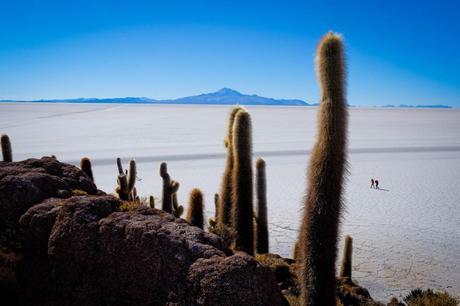
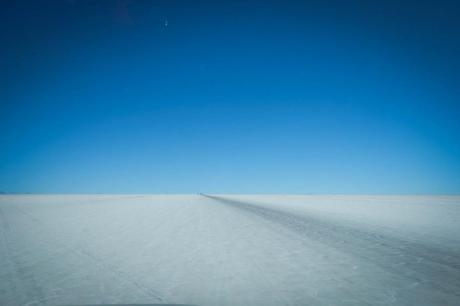

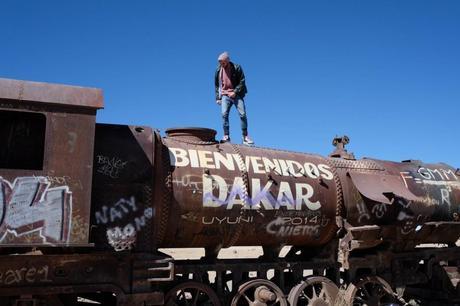
We walked on from Incahuasi straight on to the largest salt flats in the world at an altitude of 3556 metres. According to Aymaran legend, the Salar was formed with the tears and milk of Tunupa, an important deity, and some locals believe that the place should be called Salar de Tunupa instead.
With a few hours to ourselves on a vast expense of salt and nothingness, we couldn’t help but indulge ourselves in camera tricks, popping out of a peanut butter jar one minute and getting squashed by a giant the next.
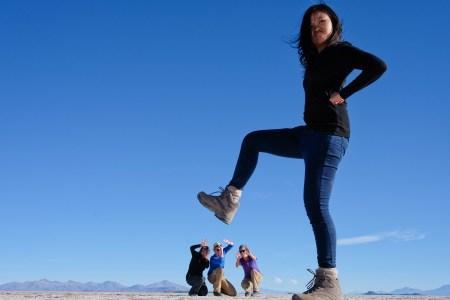
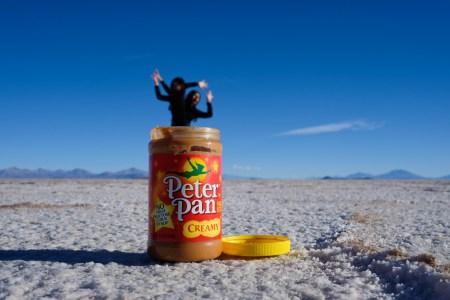
Lagoons and Hot Springs
I woke up under a pile of blankets in a hotel entirely made of salt, thankful that I was spared the altitude sickness. The second day of adventure had us blown away by strong chilly winds and the sheer beauty of the lagoons. All of them, Laguna Cordillera, Laguna Canape and Laguna Verde, were equally stunning. Bright pink flamingoes pranced against the blueness of the sky, framed by the glittering waters of the lagoons. I could have stared for a lot longer if not for the relentless wind.
As night fell, we braced ourselves for the mighty cold and an adventure of extreme temperature contrasts.
I don’t care if you’re joining me or not, but I’m going in.
said Gonzalez, our incredibly energetic guide with a curious American accent.
No one could deny that subtle challenge of heading to the outdoor hot springs, Aguas Calientes, on a windy winter night. With butterflies in our stomachs and egos in our hearts, we stripped down to our bathing suits, our skins first bitten by the – 15 degree wind, then soothed by the 38 degree water. Wading in the springs with the Milky Way above was one experience I’d never want to forget , though of course I couldn’t say the same about getting out.
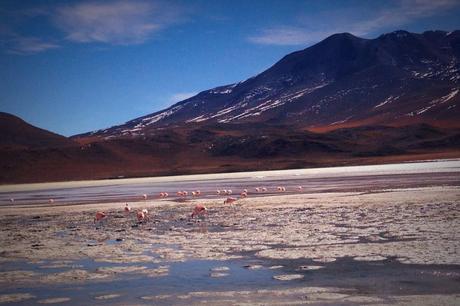
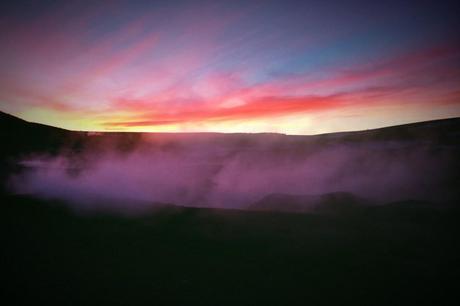
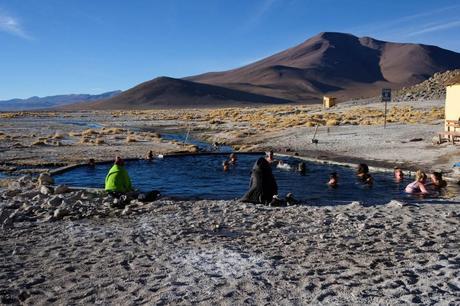
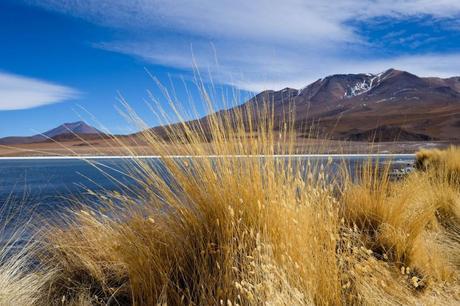

The Salar holds the world’s largest reserve of lithium, the crucial element for electric cars, smart phones, and computers. Some say that this could transform Bolivia into the Saudi Arabia of the future, while others remain skeptical. What is definite though, is that tourists are coming in ever increasing numbers to walk on salty ground, or if the Aymara legend would have it, Tunapa’s milk and tears.
Practical Information
1. I went with Red Planet Expeditions, and they were really professional. The 3D2N tour cost 1200 Bs per person and while this is a lot more expensive than other agencies, you’re paying for a peace of mind. Also, this includes additional sleeping bags which are a MUST in winter, English-speaking guides, and pretty decent food.
2. Bring really, really warm clothes. If you need to do some last-minute shopping, Uyuni town has lots of warm clothing. The tour agencies usually stop by shops which sell them at a lower price than in Uyuni town.
3. Bring swimming gear, headlights, painkillers in case of headaches, toilet paper, and water.
4. Transportation strikes are very common. If there’re no buses getting out of town and you don’t want to spend a fortune on flights, gather up with a group of travellers and head to a travel agency. They could arrange for a jeep that takes an alternative route, bypassing the blockades. It cost us USD 50 each to get from Uyuni to Potosi, which is daylight robbery in Bolivia, but the alternative was staying another night in Uyuni till… God knows when.
Tilda

